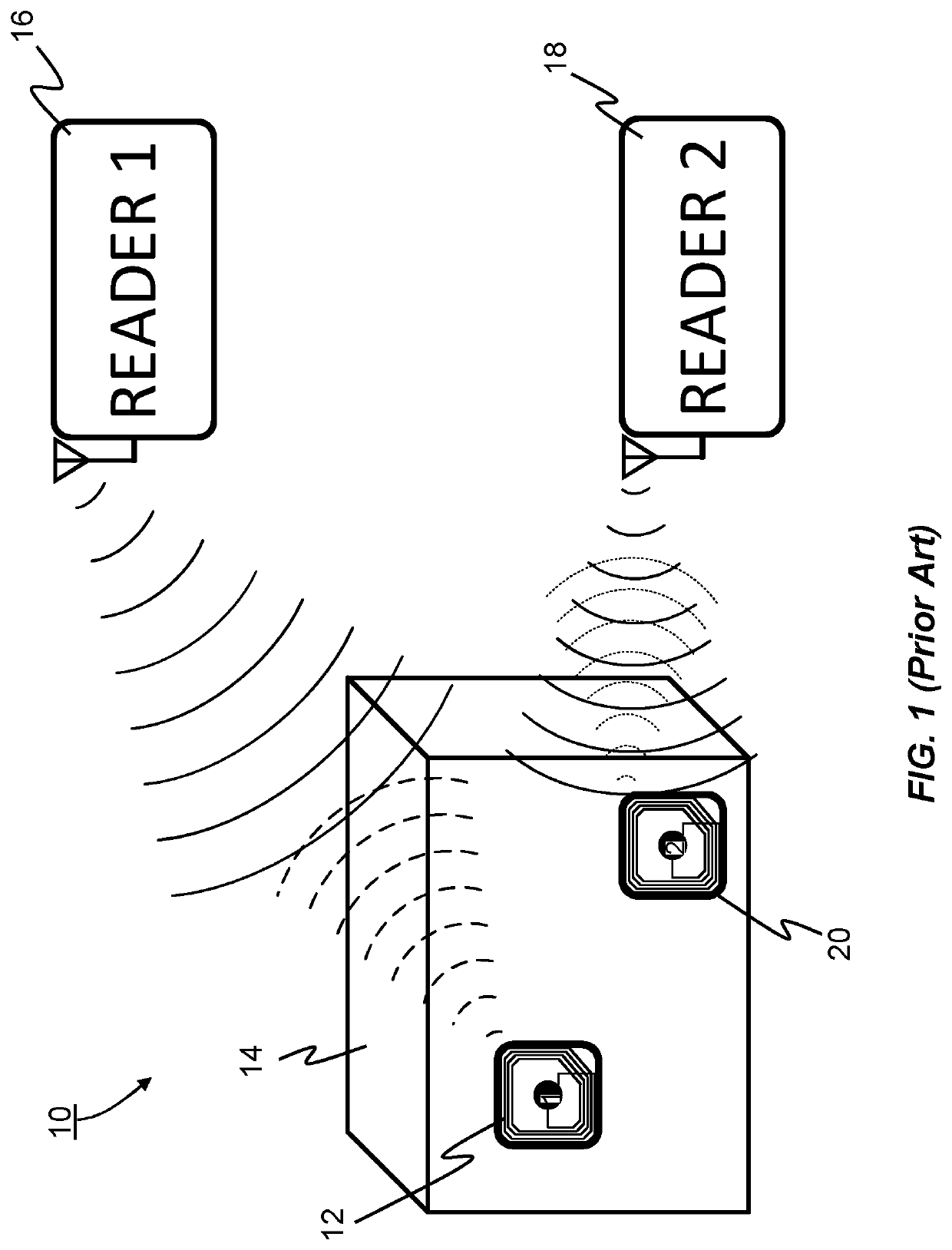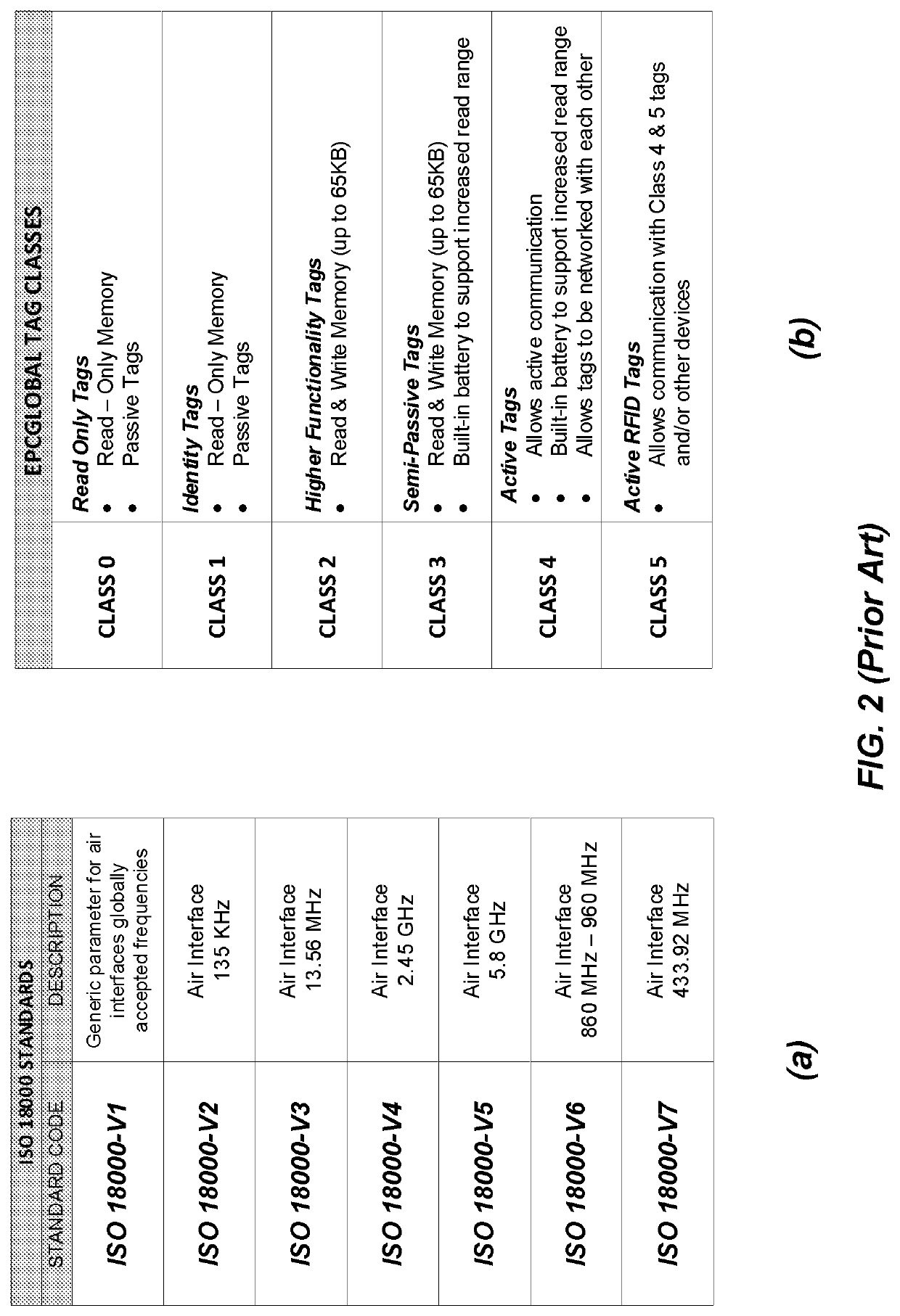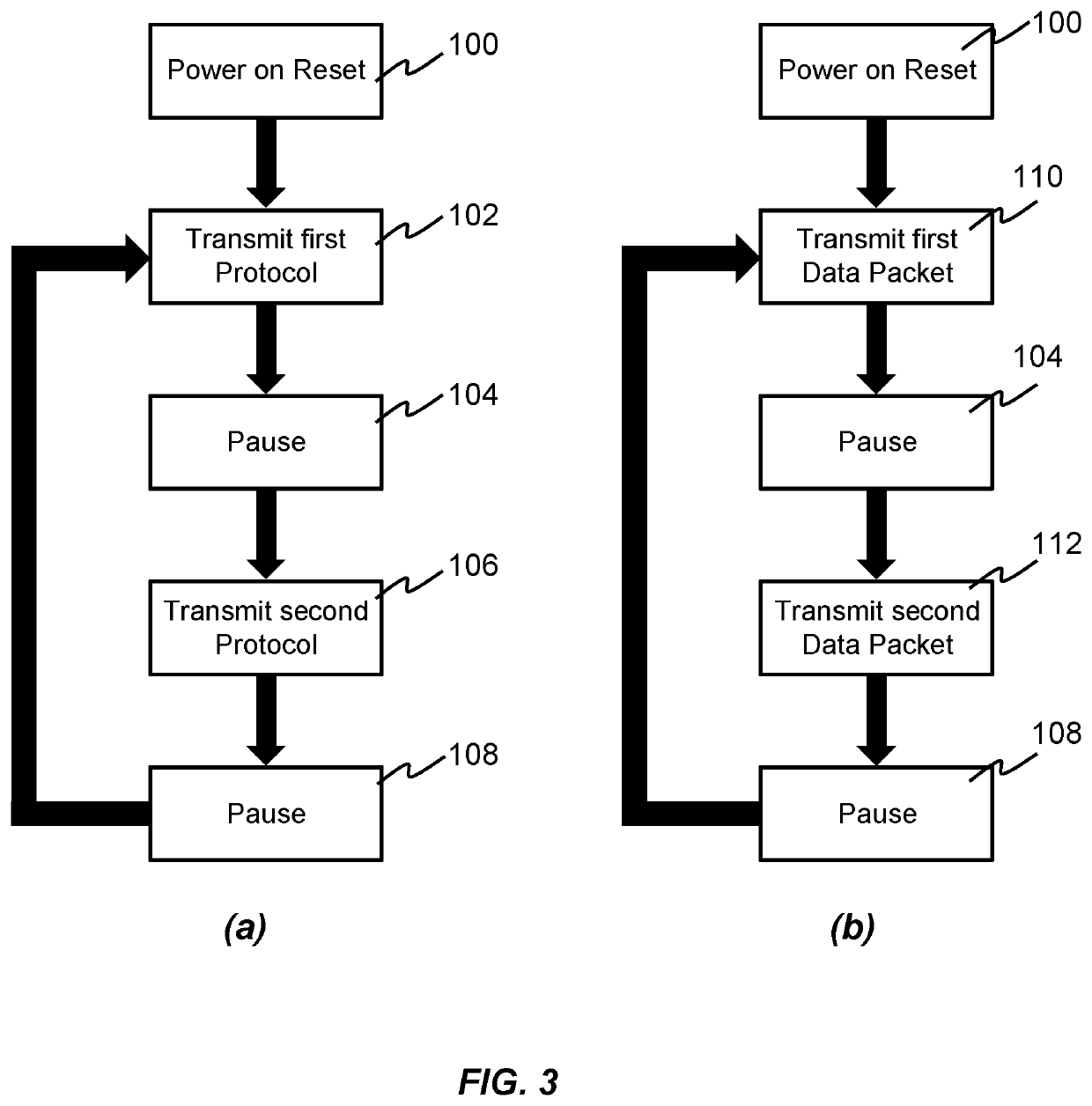A multi-protocol RFID tag and system
a multi-protocol, RFID technology, applied in the field of RFID tags and systems, can solve the problems of increasing the cost of items, preventing low-cost items from accessing the internet, and adding cost and size to the tags
- Summary
- Abstract
- Description
- Claims
- Application Information
AI Technical Summary
Benefits of technology
Problems solved by technology
Method used
Image
Examples
Embodiment Construction
)
[0037]The exemplary embodiments of this invention will be described in relation to RFID systems, and in particular to RFID systems using TTO tag(s) that are configured to receive power from an interrogating reader (passive tag), but also battery-powered TTO tag(s) that are configured to continuously broadcast information, either autonomously or when activated by an interrogating reader. As non-limiting examples, the tag(s) could be operated at 860 MHz to 960 MHz, 13.56 MHz or 125 / 134 KHz and according to any one of the standards and classes shown in FIGS. 2 (a) and (b).
[0038]However, it is understood by a person skilled in the art that any other suitable tag design (passive, semi-passive, active) may be used in connection with this invention. Also, it is understood that the scope of the invention is not limited to the specific design described for the example embodiment(s).
[0039]Further, in the context of this particular example of the present invention, signal transmission include...
PUM
 Login to View More
Login to View More Abstract
Description
Claims
Application Information
 Login to View More
Login to View More - R&D
- Intellectual Property
- Life Sciences
- Materials
- Tech Scout
- Unparalleled Data Quality
- Higher Quality Content
- 60% Fewer Hallucinations
Browse by: Latest US Patents, China's latest patents, Technical Efficacy Thesaurus, Application Domain, Technology Topic, Popular Technical Reports.
© 2025 PatSnap. All rights reserved.Legal|Privacy policy|Modern Slavery Act Transparency Statement|Sitemap|About US| Contact US: help@patsnap.com



